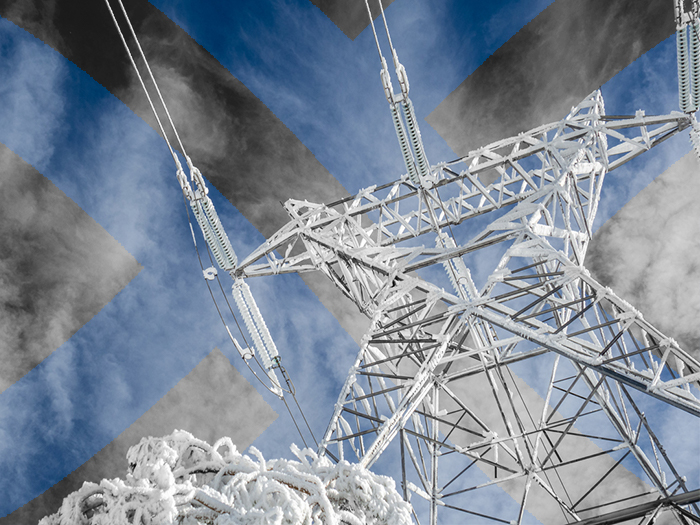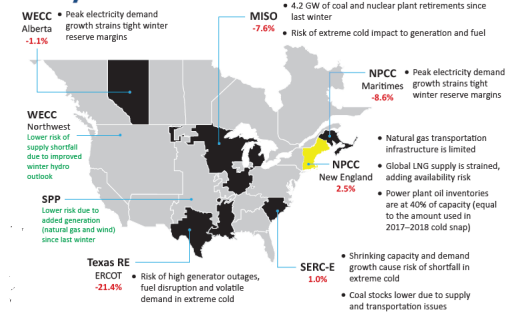Insights
better business decisions
Posted 3 years ago | 3 minute read

North America faces energy shortfalls this winter
Electricity supply could be tight this winter, with “a large portion” of the US and Canadian power system at risk of shortfalls during severe weather. The risk of potential outages is particularly high in Texas, where in the event of extreme conditions, the ERCOT capacity reserve margin could fall to -21.4%.
In its annual Winter Reliability Assessment, released on November 17, the North American Electric Reliability Corp (NERC) identified higher peak-demand projections, poor weatherization, fuel supply problems, and limited natural gas infrastructure as potential threats.

Source: NERC
For ERCOT, NERC said there was risk of a significant number of generator forced outages in extreme and prolonged cold temperatures which continues to threaten reliability where generators and fuel supply infrastructure are not designed or retrofitted for such conditions. It also noted that an upcoming US Environmental Protection Agency (EPA) decision regarding compliance with hazardous coal ash disposal regulations (expected before the end of 2022) could impact the availability of two coal-fired generation units (combined total of 1,477MW) in the last weeks of winter. Demand volatility in Texas from extreme cold temperatures also contributes to energy shortfall risks. The report said the combined risks could leave ERCOT with margins of -21.4% in the event of cold weather.
For Midcontinent ISO (MISO), it was noted that since the 2021-22 winter, reserve margins in MISO have fallen by over 5%. Nuclear and coal-fired generation retirements total over 4.2GW since the prior winter but few resource additions have been made. Since last winter, more demand response (2,250 MW) and new wind generation (500 MW on-peak/3,200 MW nameplate) was added. An extreme cold-weather event could lead to high generator outages from inadequate weatherization in southern units and unavailability of fuel for natural-gas-fired generators. Such factors put MISO’s reserve margin at -7.6% in an extremely high-demand scenario.
Other regions run the risk of energy shortfalls due to growing electricity demand, driven by electrification trends and increased economic activity post-pandemic. The Canadian province of Alberta and a portion of the south-eastern US are also at risk of generator-forced outages during extreme cold, NERC said. In the Canadian Maritime provinces of Nova Scotia and New Brunswick, growth in peak electricity demand could strain capacity even during normal winter conditions.
NERC called on state and provincial policymakers and regulators to take action to preserve generation resources.
GridBeyond SVP North America Wayne Muncaster said:
“Although the latest forecasts from NOAA suggest we could be headed for a mild winter our power grids are becoming stressed more frequently by extreme weather events. At the same time, the growing use of intermittent renewable energy sources is changing the way power is being generated and delivered to customers.
“Electricity prices are soaring as prices climb for gas. Higher natural gas prices make renewable energy more cost-competitive but because solar, wind and energy storage projects are stuck in backlogged interconnection queues, they are not getting built fast enough.
“It is good news that capacity additions from battery storage and renewables are increasing. This is a trend that we are expecting to continue as grids move towards a zero-carbon future, there will be an ever-increasing need for technologies that are able to ramp up and down to balance the system. Whether its battery storage, industrial load or crypto miners, there are numerous assets that can, if optimized, provide these services.”






